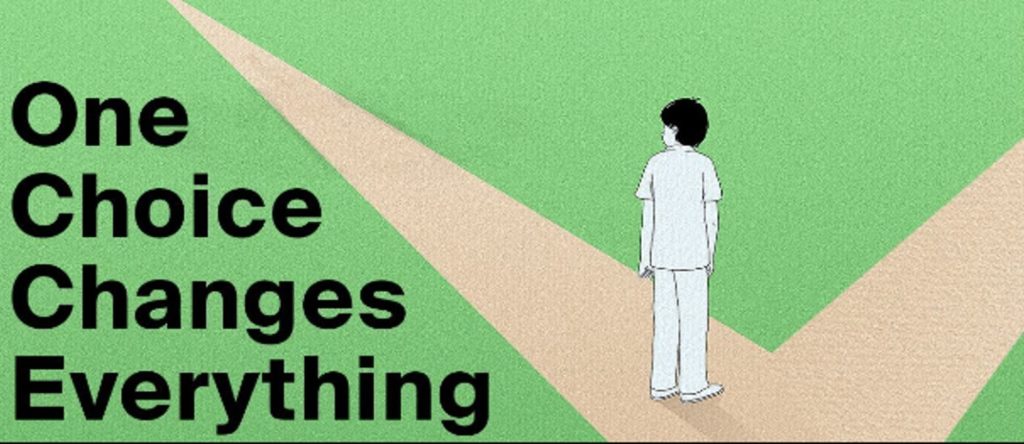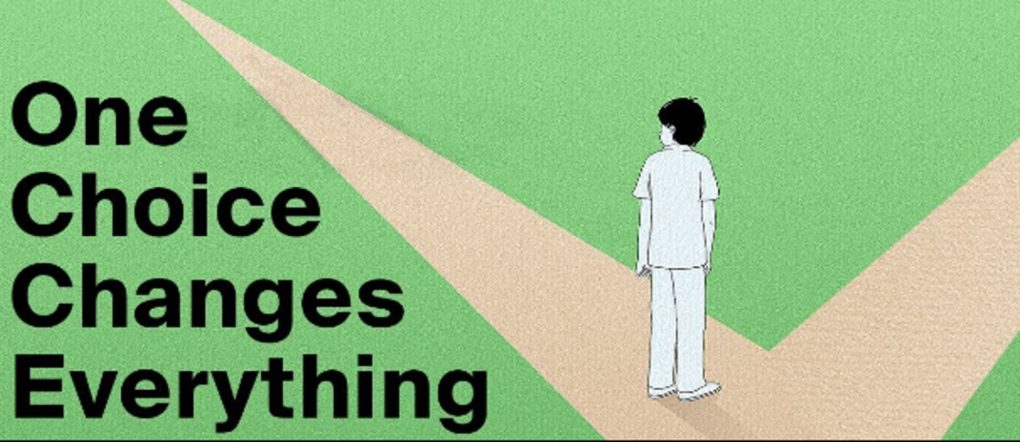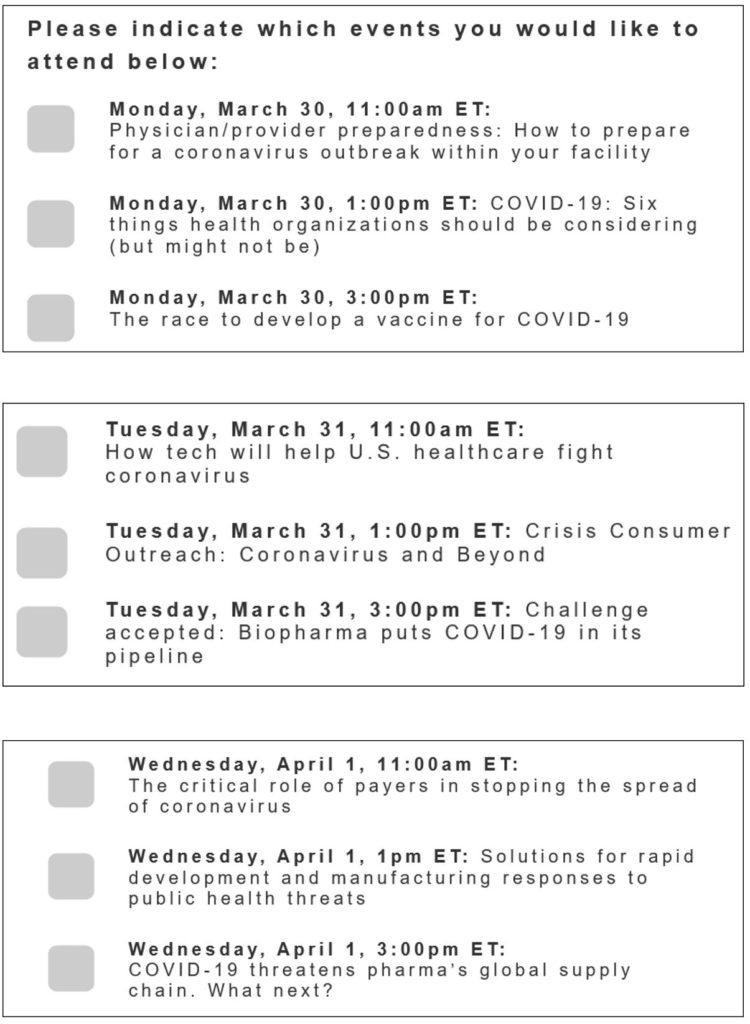What Is The Right Way To Handle COVID-19? (Free Online Event: March 30 – April 1)
 By Neenah Payne
By Neenah Payne
Note: Register for the Free Coronavirus Virtual Series: March 30-April 1
Two radically different views of the threat COVID-19 poses to America and the world are increasingly playing out now. Which view the US government adopts will have major implications for health, the economy, and our freedoms under the US Constitution.
While the World Health Organization and Bill Gates present COVID-19 as a show stopper that requires drastic measures to control, a growing number of doctors and even the Wall Street Journal are now questioning the official narrative. In the last week of March, New York Governor Cuomo – at the epicenter of the COVID-19 crisis in the US – began second guessing his decision to close most businesses and schools.
We each have a critical choice to make now. We can’t afford to be wrong. Which view do you support and why? The view the public accepts will play a critical role in our fate. Unfortunately, the corporate media is not providing people with enough information to make an informed choice. In this scenario, the alternative media is playing a vital role in helping to inform us so we can choose wisely now. (You can use Patreon to support Activist Post and Natural Blaze to help ensure continued access to the sites.)
Widget not in any sidebars
The belief that COVID-19 represents a global pandemic which threatens the survival of humanity is leading to increasingly draconian and dystopian measures around the world and in the US. A growing number of observers warn that the “cure may be worse than the disease.” The following articles indicate some of the consequences of the belief that COVID-19 is a plague that could decimate humanity.
- Canada Has Abolished Civil Liberties in the Name of “Safety”
- Footage of Indian Police Beating Lockdown Violators Goes Viral
- How Governments Are Deploying Big Data To Enforce COVID-19 Quarantines
- Police, Military Begin Door to Door Searches To Hunt Down New Yorkers Seeking Refuge
Two Widely Different Views of COVID-19 Threat
The World Health Organization continues to present COVID-19 as a serious threat to world health. Bill Gates says America needs 6-10 weeks of “extreme shutdown” to handle the coronavirus crisis. However, most people are pretty stressed out after just a week or two of the growing lockdowns. Many people who have lost their jobs are in critical financial situations as are a growing number of businesses that had to close. The economy risks going into free fall. What would another 6-10 weeks look like?
On what data is Bill Gates basing his recommendations? Wouldn’t it be wiser to follow the advice of medical doctors like the two Stanford Health Policy experts cited below in their Wall Street Journal op-ed who say that the lockdown may not be necessary or worth the enormous costs to the economy and society?
Serious Questions About WHO Data
As Good News About COVID-19 Pandemic? points out, Research Group Based At Oxford University Stops Using WHO Data For Coronavirus Reporting, Citing Errors says:
The lack of good data available during the coronavirus outbreak has been a major source of frustration for economists, statisticians, scientists, and public policy professionals. A Stanford University epidemiologist and professor of medicine, in a widely circulated Stat article, recently said the COVID-19 pandemic could end up being a “a once-in-a-century evidence fiasco.
This suggests that it would be unwise, irresponsible, and even dangerous for governments to rely exclusively on WHO data or WHO recommendations to make immediate decisions. However, although these scientists no longer trust WHO data, many governments are still basing their policies on that data. Why is there a dichotomy between science and policies that have such devastating effects on national and world economies?
In 2009, when the World Health Organization declared a “global SARS pandemic”, Obama spent $18 million on vaccines. However, it turned out there was no pandemic. It was revealed later that some WHO officials were on the take from the drug companies that would profit from the vaccines for the “pandemic”. Unfortunately, none of that information is available online now.
Serious Questions About WHO Motivations
The video “Medical Martial Law 2020” by James Corbett of The Corbett Report explores some of the possible motivations for the implementation of martial law in the case of COVID-19 even when it is not medically necessary and no matter how disruptive it is to the economy, the nation, and the world.
If all of that is not enough to give serious pause before relying on WHO recommendations, Journalist Files Charges against WHO and UN for Bioterrorism and Intent to Commit Mass Murder discusses the criminal charges filed by Austrian medical journalist Jane Burgermeister. In 2009, she discovered and reported that the flu vaccine Baxter released during the SARS “pandemic” was intentionally contaminated and would have killed millions of people – adding to the hysteria.
Status of COVID-19: “PLANDEMIC” points out:
As of 19 March 2020, COVID-19 is no longer considered to be a high consequence infectious diseases (HCID) in the UK…. Now that more is known about COVID-19, the public health bodies in the UK have reviewed the most up to date information about COVID-19 against the UK HCID criteria. They have determined that several features have now changed; in particular, more information is available about mortality rates (low overall), and there is now greater clinical awareness and a specific and sensitive laboratory test, the availability of which continues to increase. The Advisory Committee on Dangerous Pathogens (ACDP) is also of the opinion that COVID-19 should no longer be classified as an HCID.
The article points out the False Narratives governing US policies and asks:
If COVID-19 never was ‘highly infectious,’ why then does the U.S. continue a lockdown state-by-state with unprecedented restrictions? Each week more states join ‘the lockdown list’ and each week, new restrictions are passed, as in California where you can no longer travel by motor car or motor bike and you cannot walk in groups. Meanwhile, as government keeps liquor stores open, as “essential” to accommodate alcoholics, they are also releasing prisoners to comb the same streets where you can now only walk or ride your bike.
The article says: “Maybe we should all be demanding answers to a few questions before we lose all freedoms,” and lists 10 key questions we should all raise now.
Stanford MDs: Is COVID-19 As Deadly As They Say?
In their Wall Street Journal op-ed Is the Coronavirus as Deadly as They Say?: Current estimates about the Covid-19 fatality rate may be too high by orders of magnitude, Dr. Jay Bhattacharya and Dr. Eran Bendavid, professors of medicine at Stanford, point out:
If it’s true that the novel coronavirus would kill millions without shelter-in-place orders and quarantines, then the extraordinary measures being carried out in cities and states around the country are surely justified. But there’s little evidence to confirm that premise—and projections of the death toll could plausibly be orders of magnitude too high.
They add:
If the number of actual infections is much larger than the number of cases—orders of magnitude larger—then the true fatality rate is much lower as well. That’s not only plausible but likely based on what we know so far…. Next, the northeastern Italian town of Vò, near the provincial capital of Padua. On March 6, all 3,300 people of Vò were tested, and 90 were positive, a prevalence of 2.7%. Applying that prevalence to the whole province (population 955,000), which had 198 reported cases, suggests there were actually 26,000 infections at that time. That’s more than 130-fold the number of actual reported cases. Since Italy’s case fatality rate of 8% is estimated using the confirmed cases, the real fatality rate could in fact be closer to 0.06%.
The article concludes:
Given the enormous consequences of decisions around Covid-19 response, getting clear data to guide decisions now is critical. We don’t know the true infection rate in the U.S….
If we’re right about the limited scale of the epidemic, then measures focused on older populations and hospitals are sensible. Elective procedures will need to be rescheduled. Hospital resources will need to be reallocated to care for critically ill patients. Triage will need to improve. And policy makers will need to focus on reducing risks for older adults and people with underlying medical conditions.
A universal quarantine may not be worth the costs it imposes on the economy, community and individual mental and physical health. We should undertake immediate steps to evaluate the empirical basis of the current lockdowns.
Over-Reaction: A Fiasco In the Making?
A fiasco in the making? As the coronavirus pandemic takes hold, we are making decisions without reliable data is by John P.A. Ioannidis, a professor of medicine, epidemiology, and population health — and professor by courtesy of biomedical data science at Stanford University School of Medicine. He is also professor by courtesy of statistics at Stanford University School of Humanities and Sciences and co-director of the Meta-Research Innovation Center at Stanford (METRICS) at Stanford University.
Professor Ioannidis points out:
The current coronavirus disease, Covid-19, has been called a once-in-a-century pandemic. But it may also be a once-in-a-century evidence fiasco. At a time when everyone needs better information, from disease modelers and governments to people quarantined or just social distancing, we lack reliable evidence on how many people have been infected with SARS-CoV-2 or who continue to become infected. Better information is needed to guide decisions and actions of monumental significance and to monitor their impact.
He adds:
This evidence fiasco creates tremendous uncertainty about the risk of dying from Covid-19. Reported case fatality rates, like the official 3.4% rate from the World Health Organization, cause horror — and are meaningless. Patients who have been tested for SARS-CoV-2 are disproportionately those with severe symptoms and bad outcomes. As most health systems have limited testing capacity, selection bias may even worsen in the near future.
The one situation where an entire, closed population was tested was the Diamond Princess cruise ship and its quarantine passengers. The case fatality rate there was 1.0%, but this was a largely elderly population, in which the death rate from Covid-19 is much higher…. That huge range markedly affects how severe the pandemic is and what should be done. A population-wide case fatality rate of 0.05% is lower than seasonal influenza. If that is the true rate, locking down the world with potentially tremendous social and financial consequences may be totally irrational.
If we assume that case fatality rate among individuals infected by SARS-CoV-2 is 0.3% in the general population — a mid-range guess from my Diamond Princess analysis — and that 1% of the U.S. population gets infected (about 3.3 million people), this would translate to about 10,000 deaths. This sounds like a huge number, but it is buried within the noise of the estimate of deaths from “influenza-like illness.” If we had not known about a new virus out there, and had not checked individuals with PCR tests, the number of total deaths due to “influenza-like illness” would not seem unusual this year. At most, we might have casually noted that flu this season seems to be a bit worse than average….
Some worry that the 68 deaths from Covid-19 in the U.S. as of March 16 will increase exponentially to 680, 6,800, 68,000, 680,000 … along with similar catastrophic patterns around the globe. Is that a realistic scenario, or bad science fiction? How can we tell at what point such a curve might stop? In the absence of data, prepare-for-the-worst reasoning leads to extreme measures of social distancing and lockdowns. Unfortunately, we do not know if these measures work. School closures, for example, may reduce transmission rates. But they may also backfire…..School closures may also diminish the chances of developing herd immunity in an age group that is spared serious disease.
This has been the perspective behind the different stance of the United Kingdom keeping schools open, at least until as I write this. In the absence of data on the real course of the epidemic, we don’t know whether this perspective was brilliant or catastrophic.
Is “Flattening The Curve” Helpful?
Professor Ioannidis questions the much-repeated mantra to “flatten the curve.” He points out:
Flattening the curve to avoid overwhelming the health system is conceptually sound — in theory.
A visual that has become viral in media and social media shows how flattening the curve reduces the volume of the epidemic that is above the threshold of what the health system can handle at any moment.
Yet if the health system does become overwhelmed, the majority of the extra deaths may not be due to coronavirus but to other common diseases and conditions such as heart attacks, strokes, trauma, bleeding, and the like that are not adequately treated. If the level of the epidemic does overwhelm the health system and extreme measures have only modest effectiveness, then flattening the curve may make things worse: Instead of being overwhelmed during a short, acute phase, the health system will remain overwhelmed for a more protracted period. That’s another reason we need data about the exact level of the epidemic activity.
One of the bottom lines is that we don’t know how long social distancing measures and lockdowns can be maintained without major consequences to the economy, society, and mental health. Unpredictable evolutions may ensue, including financial crisis, unrest, civil strife, war, and a meltdown of the social fabric. At a minimum, we need unbiased prevalence and incidence data for the evolving infectious load to guide decision-making.
Dangers of Lockdowns
Professor Ioannidis warns:
Conversely, with lockdowns of months, if not years, life largely stops, short-term and long-term consequences are entirely unknown, and billions, not just millions, of lives may be eventually at stake. If we decide to jump off the cliff, we need some data to inform us about the rationale of such an action and the chances of landing somewhere safe.
What is The Appropriate Response to COVID-19 Now?
In The novel coronavirus is a serious threat. We need to prepare, not overreact, Darren Schulte, M.D., CEO of Apixio, a health analytics company, advises:
The Covid-19 epidemic is something like sepsis: the reaction by the media and government is likely to produce more harm to societies around the globe than the virus, possibly for many years to come. I’m not trying to downplay the impact of this virus…. Ever since China decided to restrict personal movements, public events, and business activities of its people, media outlets worldwide have revved the fear-based headline machine into overdrive….
This is a replay of what occurred in China during the SARS coronavirus outbreak in 2003. Essentially all public venues were closed, including shopping malls, indoor sports facilities, and movie theaters. More than 80% of luxury hotel rooms were vacant. Tourism to other countries was dramatically reduced. It is difficult to tell how many lives were saved with the actions to reduce the pandemic. The World Bank, however, estimated that the SARS pandemic, which lasted one year and killed fewer than 1,000 people, reduced the global economic output by $33 billion.
Dr. Schulte adds:
What’s the appropriate response to Covid-19? I believe we should counsel individuals to continue going about their daily lives while taking proper and prudent precautions until we learn more about its long-term public health risks of this disease. We should try to balance the public health and safety concerns with disruptions in daily activities.
Quarantining individuals who have been exposed to the virus or who have underlying health risks makes sense, as does adhering to prudent measures like staying at home if you feel sick, washing your hands regularly, covering your mouth when coughing and sneezing, and avoiding large social gatherings. All of these can attenuate the spread of the virus. But we must be measured in our actions so we don’t end up causing more lasting harm than good as we try to protect ourselves and our communities from a new — and scary — infectious disease.
 Dr. Schulte has more than 15 years of industry experience in healthcare analytics and technology. He served as the Chief Medical Officer and President of Apixio prior to being appointed CEO in 2014. Darren co-developed 25 clinical measures endorsed by the National Quality Forum to measure ambulatory care quality using electronic data. He is a nationally recognized speaker on the topics of healthcare analytics and quality improvement.
Dr. Schulte has more than 15 years of industry experience in healthcare analytics and technology. He served as the Chief Medical Officer and President of Apixio prior to being appointed CEO in 2014. Darren co-developed 25 clinical measures endorsed by the National Quality Forum to measure ambulatory care quality using electronic data. He is a nationally recognized speaker on the topics of healthcare analytics and quality improvement.
While the conference linked to below may be focused on the response by drug companies, it suggests a model for the wise deliberations needed now. Perhaps a virtual panel of the world’s top professors of medicine, the two Stanford Health Policy experts cited in this article and others can be held so they can advise the nation and the world on the best strategies on handling the COVID-19 crisis. The conference could also include people like John P.A. Ioannidis, professor of medicine, epidemiology, and population health — and professor by courtesy of biomedical data science at Stanford University School of Medicine.
Trump, Governor Cuomo, and others who are making decisions that affect the lives now of millions or billions of people and the world economy should welcome that kind of clear-headed unbiased guidance. Perhaps Trump could ask Dr. Schulte to contact the doctors, professors, and others mentioned in this article to assemble a list of invitees. The initial conference could probably be scheduled as early as some time in April. There could be follow-up conferences later. Why not convene a team of the world’s top experts to work on the solutions to this world-shaking crisis?
Register for the Free Coronavirus Virtual Series: March 30-April 1.
The conference includes three days of events as shown below.
Subscribe for natural health news to your inbox. Follow Natural Blaze on YouTube, Twitter and Facebook.






